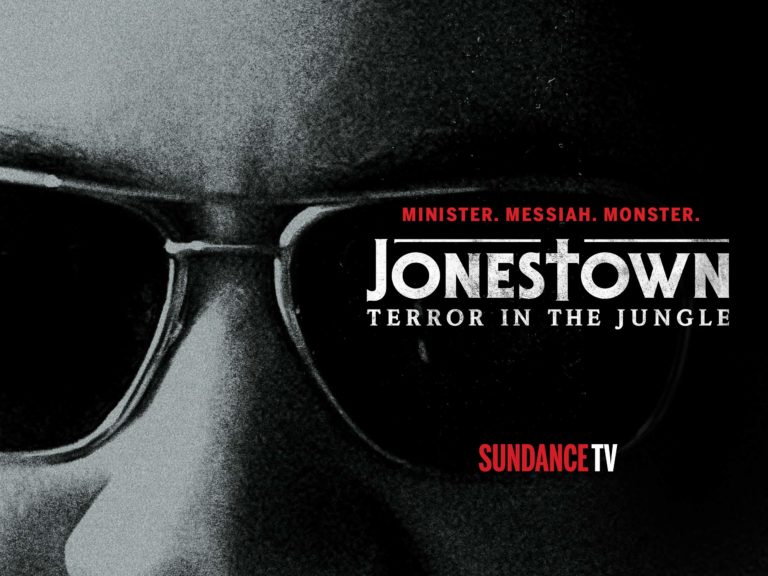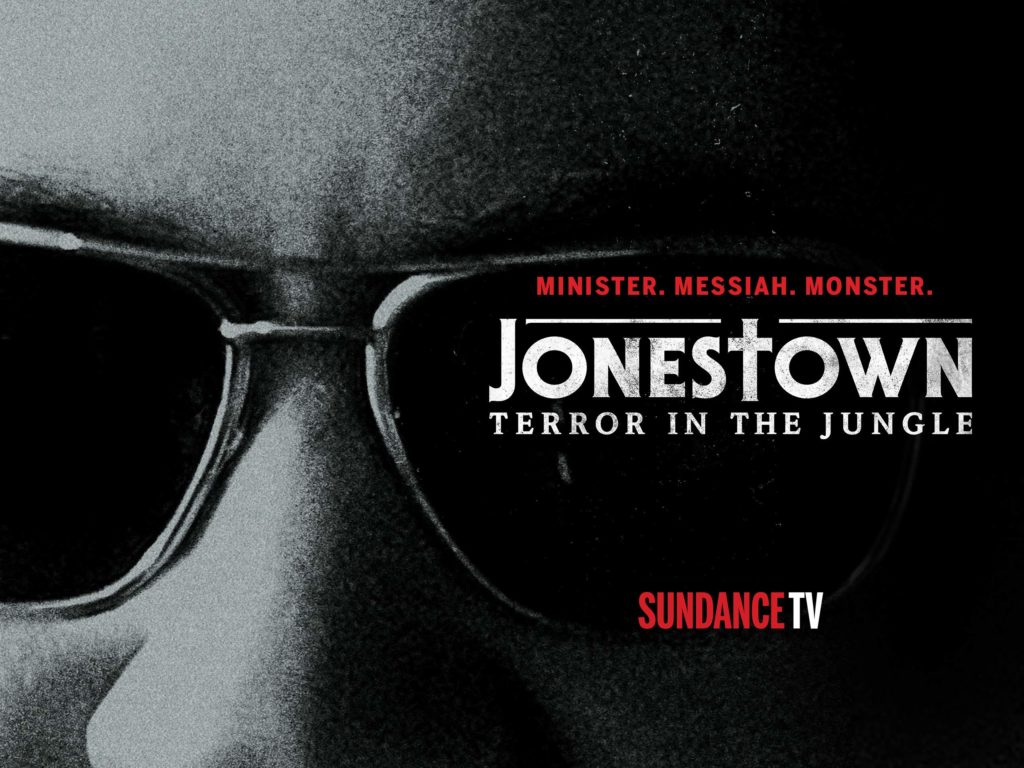
Jonestown Terror in the Jungle Review

By Anthoni Haynes
This past weekend I re-watched the documentary, Jonestown: Terror in the Jungle. The documentary was a four-part mini-series that covers the Reverend Jim Jones, his cult the Peoples’ Temple and the tragedy that is known as the Jonestown Massacre, a mass murder suicide which left over 918 people dead at the temple’s remote settlement in the rainforest of Guyana which also consisted of the death of US Congressman Leo Ryan, who had come to investigate reports of human rights violations along with members of the press. Members in Jonestown died after ingesting a cyanide-laced soft drink.
The series aired between November 16-18, 2018, on the Sundance Channel and was released to coincide with the 40th anniversary of the massacre in Jonestown. Aired in four episodes the series shows Jim Jones transformation from his childhood days to a charismatic pastor and social justice advocate to a sadistic tyrant that causes the end of his own church. What the series also does is talk about people inside the temple as it consists of interviews from former temple members and survivors including Jim Jones’s sons, relatives of members, current US Rep Jackie Speier who was an aid to Leo Ryan, journalist, and psychological and sociological experts. The documentary also consists of CIA and FBI recordings as well as archive footage. The series was partially based on a book by investigative journalist Jeff Guinn. What the documentary also does is discuss Black identity as most People Temples members were Black and African American who lived through Jim Crow and racial discrimination, the events took place during the Civil Rights and Cold War era and even Guyana, the country in which Jonestown was settled in as a huge Black population. With all this in mind my focus when watching was from a Black point of view as well as a Guyanese point of view.
The first episode of the series was called Making of a Madman which began with archive footage of the aftermath of the massacre then going into the childhood of Jim Jones and the foundation of the Peoples Temple and its early days. The temple was founded in rural Indiana as a Pentecostal church and the first racially integrated church in Indiana. Jones then moved the church to Northern California in search of raising membership and developing a community the episode ends with Jim Jones faking his assassination attempt. The second episode is entitled On the Run and shows the mass growth of the temple as well Jones narcissistic tactics and abuse of members and the temples move to San Francisco. The third episode Under Siege depicts the temples mass exodus to their commune established in Guyana after former members speak out against the Temples abuses. Jones paints the move to Guyana as a “promised land” where the temple can build their own socialist utopia free of racial and economic oppression. The final episode Death in the Promised Land shows Congressman Ryan’s delegation visit to Jonestown and the fateful last day in which 909 members die in the mass murder suicide along with 5 people of Leo Ryan’s delegation who die after being ambushed at a nearby airstrip as they waited for planes to depart from the rainforest. 4 people also die at the Temples headquarters in Guyana’s capital, Georgetown Sharon Amos, one of Jones’ lieutenants murders her three children before killing herself at the house.
Watching the documentary from the lenses of Black identity revealed many things about many issues that the Black community faced in that era and continue to face. One being the issue of racial discrimination and the Black struggle. Many Peoples Temple members were Black and African Americans from both the inner city and the Deep South, so they witnessed and were victims of racial segregation, Jim Crown, rural and urban poverty, housing discrimination etc. These members came to the church because it was prevented as a haven that was dedicated to the greater good. Jim Jones specifically targeted Black people using “the same side of the tracks” rhetoric using his upbringing as a social outcast and a White person living in poverty. The events also took place during a period of great political and social unrest, with the Civil Rights movement, The Vietnam War and the Cold war, the War on Drugs etc. Black People in this moment has seen it all at this point from the assassination of leaders like Dr. Martin Luther King Jr, John F. Kennedy, Malcolm X etc., wars, racial segregation, civil unrest not just in the United States but globally as liberation movements in Africa and The Caribbean coincide with what’s going on in America. Jones even relocated his congregation to Guyana, a country with Black leadership at the time. This issue persists today as we seen with the Black Lives Matter movement, political unrest in predominately Black countries, racial discrimination etc. Another issue is the issue of “the White Savior” and how many White people will pose as allies to the Black community for their own benefit. As mentioned, Jones targeted members of the Black community using the “on the same team” rhetoric, Christianity, allying with Black activist and politicians, adopting a Black son, etc. all for his own personal gain something that is seen repeatedly.
With myself being Guyanese American, the first generation born child of Guyanese immigrants I just had to look at the documentary from the point of view of a Guyanese as well. Growing up I always heard about Jonestown and the stain that it has had on the reputation of Guyana. For those who don’t know Guyana is a small country on the northern coast of South America with political, cultural, and historic ties to the Caribbean. Jim Jones chose Guyana as the country the temple would resettle to because of its remoteness, its large Black, East Indian, and Indigenous population, and its socialist government. In the era of Jonestown, Guyana wad going through political and social change like the rest of the world having become an independent nation in 1966 (five years prior to the establishment of Jonestown), centuries of colonial rule, racial tension between East Indians and Africans, economic recession and poverty and the effects of the Cold War. With Jim Jones preaching socialism and Guyana’s government leaning toward social he can convince the Guyanese Prime minister, Forbes Burnham to let the Temple build its settlement in Guyana. What did not help was the US governments active imperialist presence in Guyana something that still goes on till this day with the US intervening in the 2020 Guyana election. When discussing Jonestown, I’m often asked, “why did Guyanese participate in Jonestown” and in fact no Guyanese died in the massacre however Guyanese still get the reputation of being gullible and backwards because of what happened in Jonestown and how it coincided with Guyana’s political state. The same way other countries are known for culture, art, war, genocide, music, etc sadly when people think Guyana, they think Jonestown.
In conclusion, I would recommend watching Jonestown Terror in the Jungle because not only tells the story of People’s Temple that is often forgotten it also discusses how the tragedy is relevant to today and the struggles of Black people. Its political and social commentary sheds light how we can overcome the mistakes that have been made in the struggle against racial discrimination.

